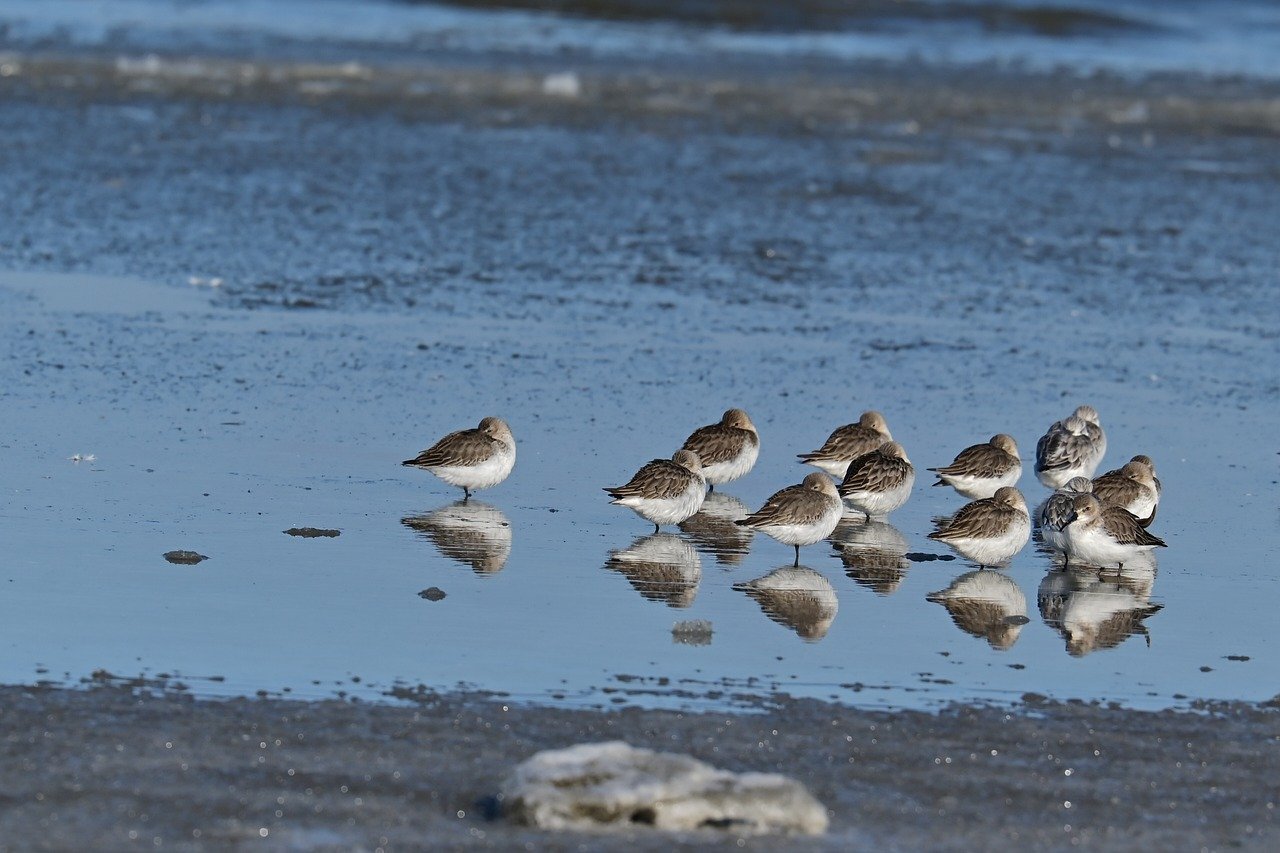Fat reserves in Dunlins Calidris alpina during autumn migration through Gulf of Gdańsk
DOI:
https://doi.org/10.34080/os.v8.22949Keywords:
fat storage, foraging ecology, staging sites, stopover sites, bird ringing, bird banding, bird observatory, biometricsAbstract
To describe fat reserves in adult and juvenile Dunlins during autumn migration in the Gulf of Gdańsk, multiple regression equations for estimating fat mass in Dunlins were derived. The average fat level in a particular wave of migrants depends on many factors. Low amount of accumulated fat suggests that this species migrates along the southern Baltic in small steps, similarly to the rest of Europe. The interpretation of the results is difficult because at least two distinct migration routes cross the Gulf of Gdańsk region. DunIins starting their primary moult had lower fat index than birds in advanced stages of moult. The rate of fattening in Dunlins depends on the quality of the feeding place (higher in the sewage farm than in the river estuary). Birds which stayed longer in the feeding area had, on average, lower fat mass increments than those leaving Gulf of Gdansk after a short stay. Birds with low fat mass started putting on weight immediately, whereas "fat" birds lost weight at the beginning. Those results confirmed Mascher's (1966) hypothesis about differences in body mass change rate during the first day of stay in birds with low and high fat reserves. The level of free fatty acids in the blood appears to be a factor controlling this pattern. Differences in fat accumulation between Ottenby (southern Sweden) and Gulf of Gdańsk are discussed.
Downloads

Downloads
Published
How to Cite
Issue
Section
License
The copyright of each contribution belongs to the author(s), but all contributions are published under a Creative Commons license, so that anyone is free to share and reuse the contribution as long as the copyright holder is attributed.







